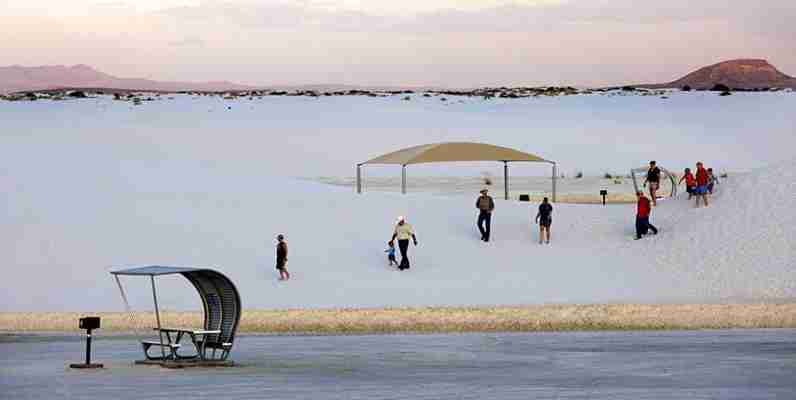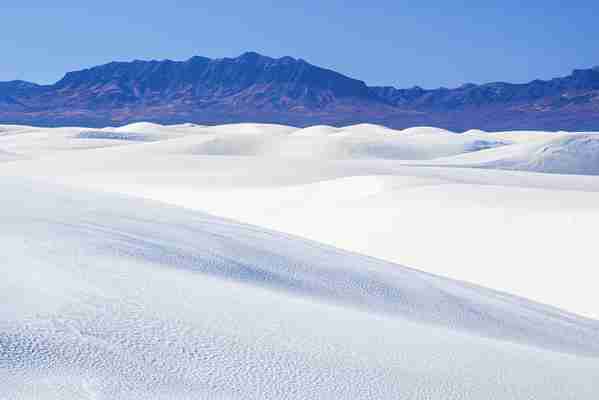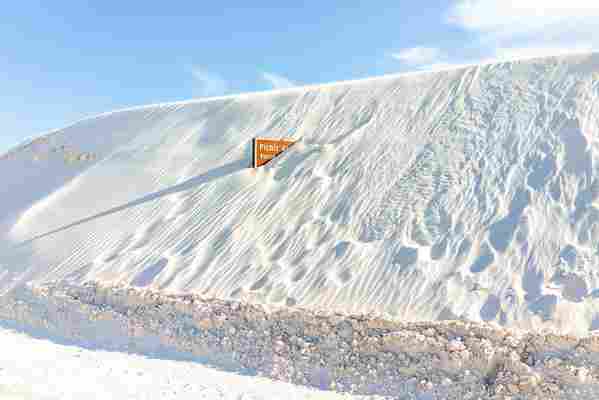It was the midst of the Great Depression when President Herbert Hoover declared a swath of undulating, eerily pale dunes in southern New Mexico a national monument. Now 87 years later, White Sands has just been declared the United States’ 62nd national park .

The history of the newly-minted White Sands National Park goes back far beyond these presidential decrees, however. A unique series of fossilized footprints known as the White Sands Trackway show that almost 12,000 years ago ancient humans were stalking giant sloths here, hunting varieties of megafauna that died out by the end of the Pleistocene.
It was 2000 years later that the enormous gypsum dunes for which the new national park was named began to form, the result of steady evaporation of what was once a vast inland sea and, later, a lake between the San Andres and Sacramento Mountains. Prevailing winds eventually swirled those white gypsum sands into dunes that cover about 275 square miles of the Land of Enchantment .
By the time European settlers arrived in the 1800s, the area now known as White Sands National Park was well known to bands of Apache who lived in the Tularosa Basin and surrounding mountain ranges. Their descendants now live on the Mescalero Apache Indian Reservation between Fort Stanton-Snowy River Cave National Conservation Area and Lincoln National Forest.

“Our staff are very excited for White Sands to be recognized as a national park and to reintroduce ourselves to the American public,” said White Sands National Park Superintendent Marie Sauter in a press release on 21 December.
About half a million people per year visited White Sands while it was a national monument, but if the success of Indiana Dunes ' 2019 transition to a national park is any indication, those numbers could rapidly rise. The summer after Indian Dunes was redesignated, it saw a 17% increase in visitorship, breaking all-time annual records.
In anticipation of greater public interest, White Sands National Park has increased entry fees to $25 (€22) per vehicle, $15 (€13) per person, and $20 (€18) per motorcycle.

Those meeting White Sands for the first time will discover a broad range of outdoor activities, including primitive backcountry camping, mountain and fat biking, hiking, and cruising the eight-mile Dunes Drive scenic route. Another favorite pastime includes using waxed saucer sleds to slide down the dunes.
Rangers regularly lead full moon hikes and other programs like meteor shower watching parties and MothaPalooza, an event that celebrates the 60 species of moths endemic to White Sands National Park.
Visitors can also pay a visit to the White Sands Missile Test Center Museum in nearby Las Cruces to learn more about the military testing that still periodically occurs in the park. Another attraction in the area is Organ Mountains-Desert Peaks National Monument , the newest national monument in New Mexico, established in 2014.

Leave a Reply